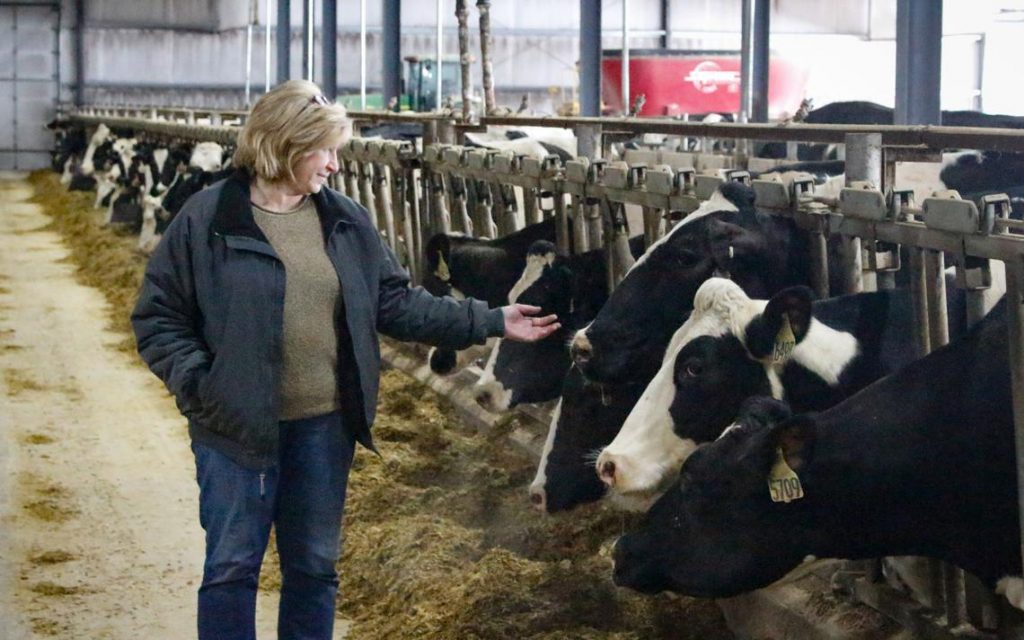
“People hear cows pollute the earth,” said Rita Young, shaking her head in frustration over what she calls a major misperception of how she and her family make their living. “We want to save the planet, too.”
Young, along with her husband, Maurie Young, and son, Darrin Young, own and operate Emerald Spring Dairy east of Plainview and just across the line into Winona County.
In that space where agricultural business and environmental responsibility meet, perhaps no segment of farming suffers from the push-and-pull of those interests more than dairies. And, in Minnesota, perhaps none face the uphill battle of those in Winona County.
The county has a cap of 1,500 animal units — 1,071 dairy cows — for each permitted feedlot. The Minnesota Pollution Control Agency requires feedlots with 1,000 animal units or more to undergo environmental review to obtain a National Pollution Discharge Elimination Systems permit before obtaining a conditional use permit from their counties.
And while the rules for obtaining permits are fairly straightforward, the actual process can be anything but simple.
For the Youngs, environmental regulations represent a mix of both frustration and bemusement. And the response from the public about the 1,400 cattle they run — or about other large feedlots like their own — can be exasperating.
“My concern is they won’t rely on the science,” Rita said, talking about how regulators and lawmakers can impact a farm’s business. “I’m concerned they’ll let public opinion dictate them. We know the science proves our point.”
That science, she said, comes from many angles. For example, a 2009 study from Cornell University states that from 1944 to 2007, the U.S. dairy industry reduced its carbon footprint 63% for the equivalent milk production.
“Farmers are problem-solvers by nature, so we’re always looking for better ways to do what we do, like raise crops or cattle,” Darrin said.
He noted another set of facts that show as the number of dairy cows in the U.S. over the past half-dozen decades has dropped from 25 million to about 9 million, the industry has improved production by 17%.
“You have 16 million fewer animals and produce more product,” Darrin said.
Despite the industry’s success reducing greenhouse gases — and the continued loss of dairy cows in Minnesota as small dairies shut their barn doors at greater and greater rates — Darrin and Maurie noted that if Emerald Spring is to expand under the current regulatory climate, it likely would not do so in Winona County due to the county’s animal unit cap.
“Currently, we own land in a different county,” Darrin said.
Maurie added, “That expansion won’t be here. We’re 600 feet from the Wabasha County line. It’s very frustrating.”
And there are other regulatory concerns.
“I think it’s inevitable the day is coming when we do have to measure it,” Maurice said, referring to greenhouse gas emissions from dairies.
Recently, the Minnesota Pollution Control Agency announced it would start creating an inventory of greenhouse gas emissions for every feedlot proposal that requires an environmental assessment worksheet.
The Youngs agreed that the dairy industry has been a leader in reducing greenhouse gas emissions. However, they look at California and the way that state has been focusing on such emissions for large feedlots, and they see a cautionary tale for Minnesota.
California has been requiring large feedlots to install methane digesters, facilities that collect manure and encourage the off-gassing of methane that is then collected for power generation. However, California has been paying farmers to install digesters, something the Youngs think is unlikely in Minnesota.
When it comes to environmental groups and farms, Darrin said, both sides share the same goals regarding sustainability and the environment. He said he welcomed the current regulations from the MPCA and pointed to some of the practices at Emerald Spring that show how the Youngs work to take care of the land.
The family plants about 1,900 acres of crops — most of which goes to feed their cattle — and includes about 500 acres of alfalfa in the rotation. They use cover crops, incorporate no-till into some of their crops, recycle both the wash water from the cows and the sand used for bedding, and, as part of a Conservation Stewardship Program, will be planting a pollinator plot.
And, Rita said, her family’s story with the environment is a common tale among larger dairies across Minnesota.
“We’re able to produce a great quality product and still be great stewards,” she said.
























